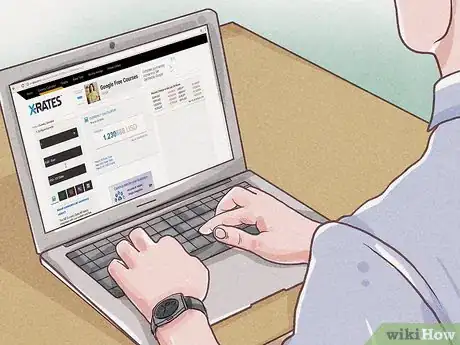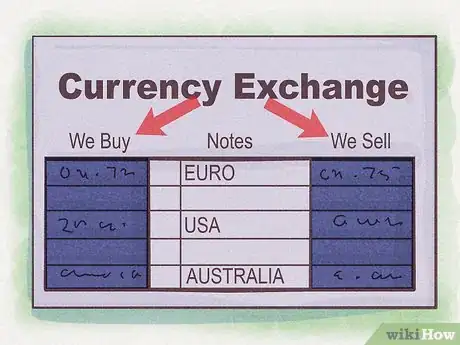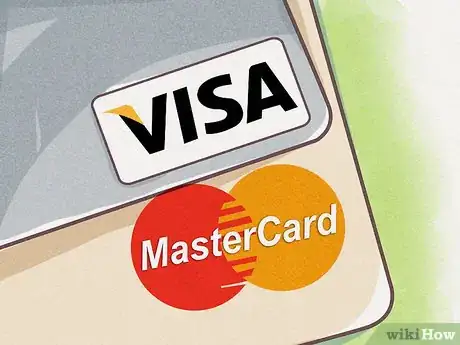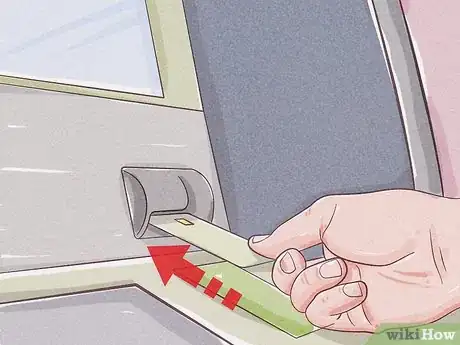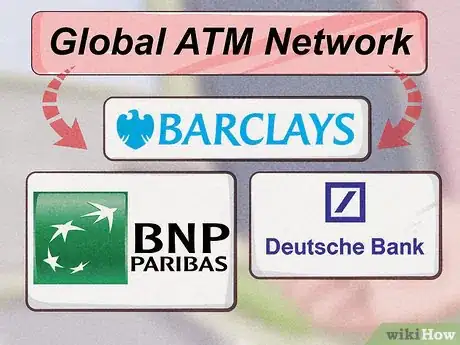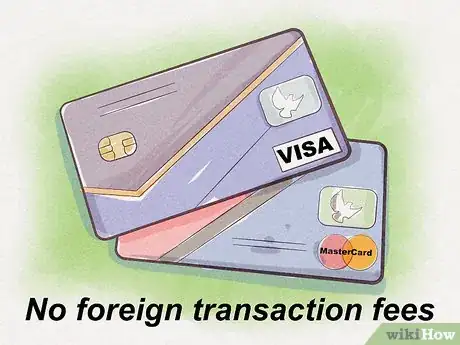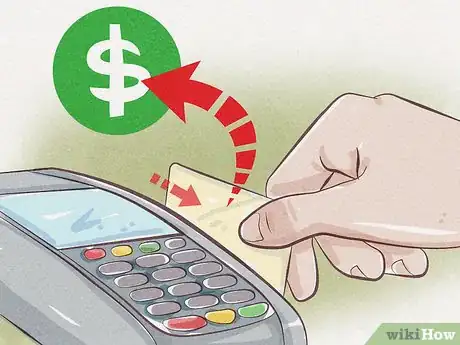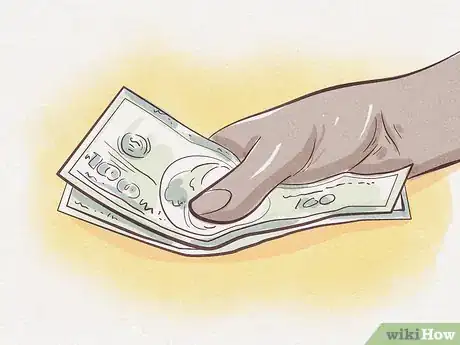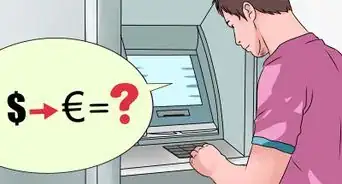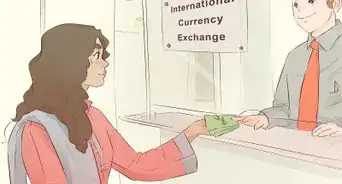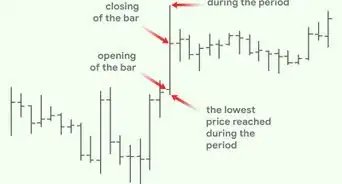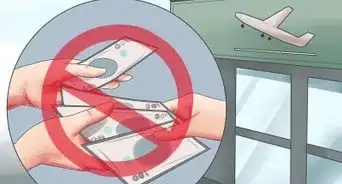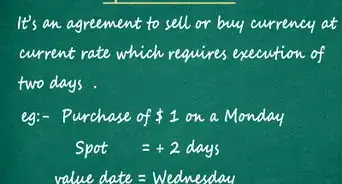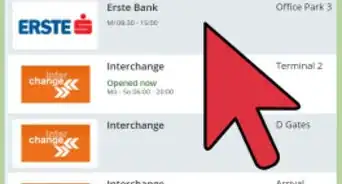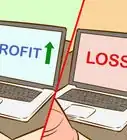This article was co-authored by wikiHow staff writer, Jennifer Mueller, JD. Jennifer Mueller is a wikiHow Content Creator. She specializes in reviewing, fact-checking, and evaluating wikiHow's content to ensure thoroughness and accuracy. Jennifer holds a JD from Indiana University Maurer School of Law in 2006.
This article has been viewed 20,424 times.
Learn more...
If you're traveling to the U.S. from a European country, you'll likely want to convert euros to dollars. You can use your debit and credit cards for most transactions, but you'll still want a little cold hard cash to cover tips and other small purchases. In most cases, you can get the best exchange rate by withdrawing money from your European bank account in dollars from a state-side ATM.
Steps
Exchanging Currency
-
1Check currency rates with a free online exchange rate calculator. The basic exchange rate is defined as the rate banks are paying each other for foreign currency. Find this information through a free online calculator. These rates change daily, so you'll want to check regularly while traveling.[1]
- Armed with this information, you'll know whether a rate you see is a good deal, or whether you should look elsewhere to exchange your currency.
- One reliable online exchange rate calculator is X-Rates. Go to http://x-rates.com/calculator/?from=EUR&to=USD&amount=1 to convert euros to dollars.
-
2Learn how to read currency exchange boards. You'll likely do most of your conversions through ATMs, but it's still helpful to understand a currency exchange board. Circumstances might require you to use a bank or other currency exchange.[2]
- Currency exchange boards have two columns, the buy column and the sell column. If you're in Europe and want to buy some U.S. currency before you leave, look at the rate in the sell column for U.S. dollars. That is the rate at which the bank will sell you U.S. dollars.
- Once you're in the U.S., look at the rate in the buy column for euros. Now the U.S. bank or exchange is purchasing euros from you and giving you dollars.
- The difference between the buy rate and the sell rate for any given currency is the amount of money the bank or exchange is making on the transaction. You want this amount to be as low as possible.
Advertisement -
3Wait to exchange money until you arrive in the U.S. While you can buy U.S. dollars from a bank in your home country before you take your trip, you'll generally get a better rate in the U.S. than you would abroad. Start with a small amount as backup, and plan on getting the bulk of your cash after you arrive.[3]
- As long as you have a major credit or debit card with a Visa or MasterCard logo, you should be fine when you land. Even if you have to take a taxi from the airport, most cab drivers accept credit and debit cards, or will drive you to an ATM on the way.
-
4Avoid airport exchange kiosks. As soon as you get off your plane in the U.S., you'll see kiosks in the airport that will exchange currency for you. These are convenient and tempting, but they typically charge high fees and offer a poor rate of exchange relative to a major bank.[4]
- Read the exchange boards carefully and compare them to what you know about the interbank exchange rate from checking the online calculator.
- Also look at the differences between the buy and sell rates. Generally, avoid using an exchange if the difference between those two rates is more than .10.
-
5Withdraw cash from an ATM at a major bank. Using the ATM at a major bank is the easiest way to get local currency when you're traveling abroad. Always use ATMs located at banks (preferably inside) to ensure maximum security.[5]
- ATMs in out-of-the-way places can be easily compromised by identity thieves. Additionally, ATMs operated by third-party vendors typically charge hefty fees that may not be reimbursed by your bank.
Minimizing Transaction Fees
-
1Use a bank in the Global ATM Network. This is the largest network that waives fees if you use the ATM of any other bank in the network. These banks charge higher fees for transactions outside the network, but you can save money if you stay within the network.[6]
- In the U.S., Bank of America is a member of the Global ATM Network. If your bank in your home country is also a member of the network, use Bank of America ATMs while in the U.S. to eliminate withdrawal fees.
- European banks in the Global ATM network include Barclays, BNP Paribas, and Deutsche Bank.
-
2Take credit cards with no foreign transaction fees. Many credit cards charge a foreign transaction fee of anywhere between 1 and 5 percent on purchases you make outside the EU. Choose a card that doesn't charge these fees and make it your primary credit card while traveling in the U.S.[7]
- Credit cards typically get better exchange rates than other financial services companies. Use your credit card for large purchases, such as paying for your hotel.
- You'll also enjoy greater security when you use a credit card. If your credit card is lost or stolen, you can cancel it immediately without liability for any fraudulent charges.
-
3Pick local currency for credit card transactions. When you buy something with a credit card, you may be given the option to use euros or dollars. While in the U.S., always choose to pay with dollars. Otherwise, you may end up paying additional fees.[8]
- This process is known as dynamic currency conversion, and may result in a premium as high as 10 percent being added to your purchase. It can also trigger fees and penalties from your own credit card company.
-
4Plan your cash exchanges. Every time you get cash, you'll lose a little money in fees and commissions. It may not seem like much at first, but those fees can add up. Budget your trip and plan on making only one or two cash withdrawals.[9]
- Generally, you want to have at least $200 in cash on hand for tips and small daily transactions. If you're staying in the U.S. longer than a week or two, you may need more than that.
- If you take all the cash you're going to need out at once, don't carry it all with you. Use your hotel's safe to store the cash you won't need for that day.
References
- ↑ https://www.fodors.com/news/exchanging-your-3870
- ↑ https://dailyfinancetimes.com/usd-to-cad/
- ↑ https://www.ricksteves.com/travel-tips/money/cash-tips
- ↑ https://www.nerdwallet.com/blog/banking/exchange-currency-paying-huge-fees/
- ↑ https://www.nomadicmatt.com/travel-blogs/avoid-paying-bank-fees-traveling/
- ↑ https://www.nomadicmatt.com/travel-blogs/avoid-paying-bank-fees-traveling/
- ↑ https://www.nomadicmatt.com/travel-blogs/avoid-paying-bank-fees-traveling/
- ↑ https://www.fodors.com/news/exchanging-your-3870
- ↑ https://www.fodors.com/news/exchanging-your-3870
About This Article
To exchange euros into dollars, start by checking the exchange rate online so you know how many dollars you should be getting. Then, wait until you're in the U.S. before exchanging your money, since you'll get a better exchange rate. You should avoid using airport kiosks, because they typically charge you higher exchange fees. Additionally, withdraw dollars using your debit or credit card from an ATM at a major bank to avoid paying third party vendor fees. For tips on how to read currency exchange boards, keep reading!
